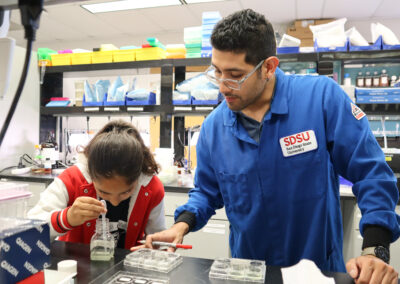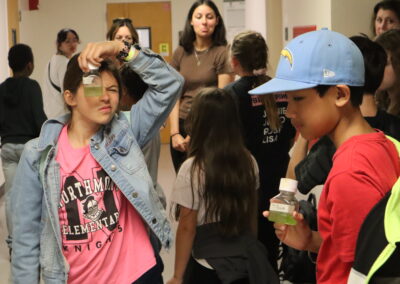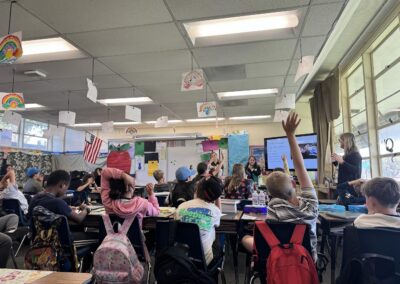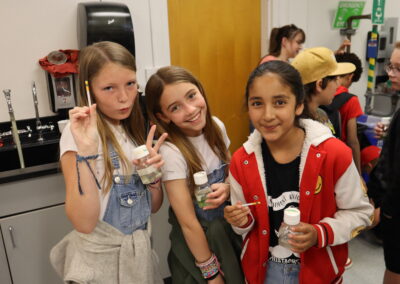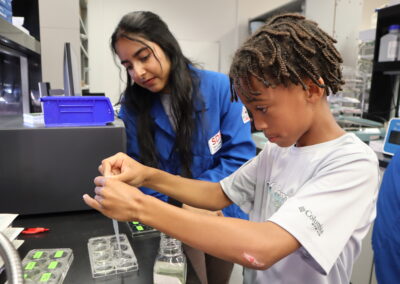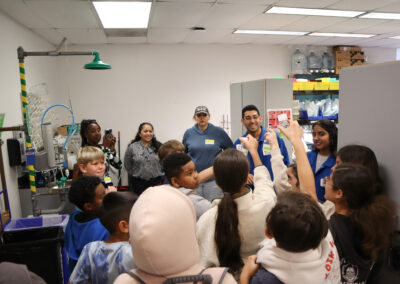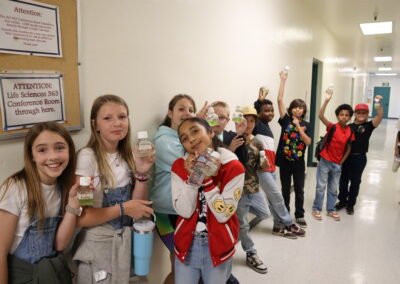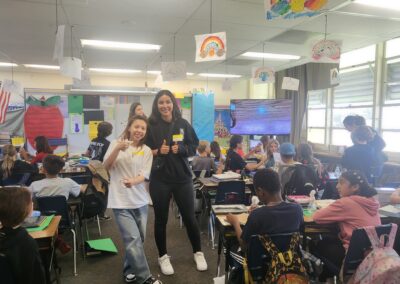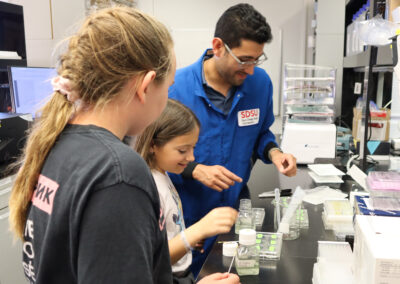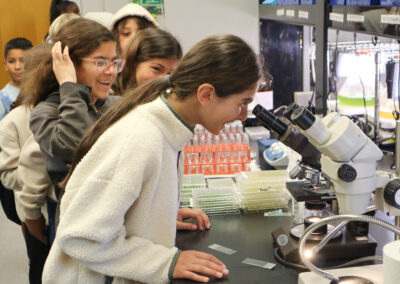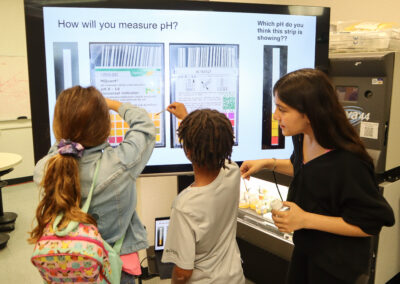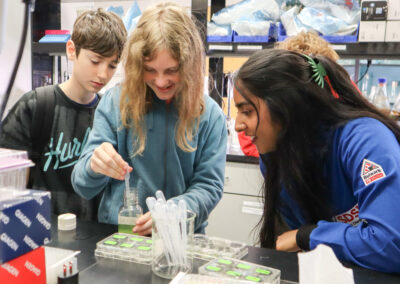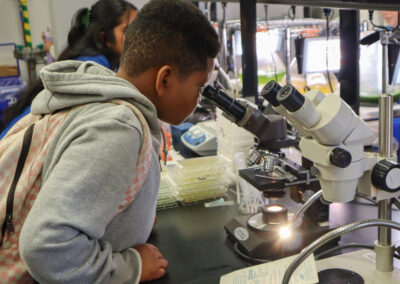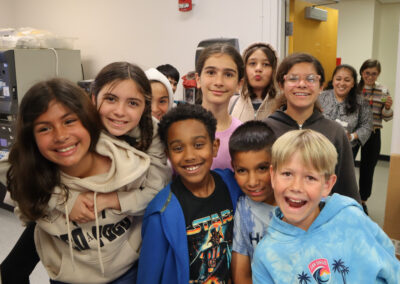Professor Cristal Zuniga partners with Northmont Elementary to inspire underrepresented students to consider college and futures in STEM
By Bryana Quintana
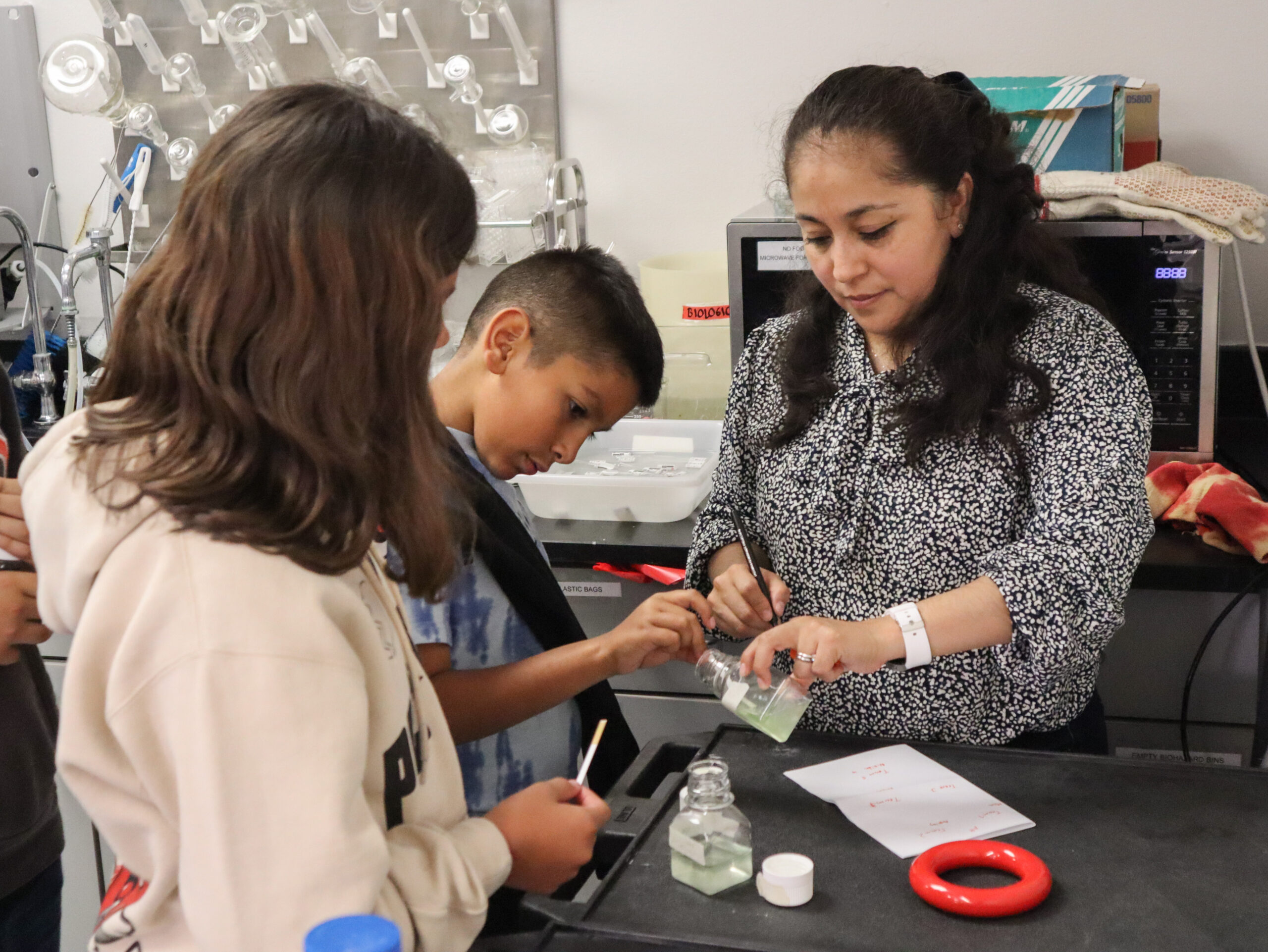
Cristal Zuniga assists local fifth grade students from Tracy Beach’s Northmont Elementary School class as they measure the biomass of algae samples
It’s back to school season and while students are returning to campus and classes are resuming, the science never stops at San Diego State University. Students, faculty and staff go above and beyond all year round, bringing our science to the community and beyond.
One example of this is the laboratory of Cristal Zuniga in the biology department, which organized an exchange program with a local elementary school in the spring. The exchange was made possible by a National Science Foundation grant Zuniga was awarded to study marine and fresh water microalgae. Part of the grant funds additional research activities to promote diversity and inclusion by sharing science with underrepresented communities.
For this project, Zuniga and her lab teamed up with Tracy Beach and her fifth grade class at Northmont Elementary School, a diverse, Title I-eligible school just seven miles from SDSU. Beach and Zuniga worked together to design a two-week program that demonstrated how microbes convert matter into biomass, teaching lessons that tie into Zuniga’s microalgae research while meeting the standards of the fifth grade science curriculum.
During the first week of the program, the Zuniga team visited Northmont to start an experiment where students could care for their own algae samples and learn how these organisms convert light into energy through photosynthesis.
The next week, students spent time in the lab at SDSU, using instruments such as a spectrophotometer and pH testing tools to measure the biomass of their samples. During the visit, the fifth graders also video chatted with scientists working in Mexico and the UK, former students working remotely for the Zuniga lab, who gave an overview of their research and answered the elementary schoolers’ questions.
“It is important for students from all backgrounds to learn about all the possibilities of education that they have around the corner,” Zuniga said. “Several students were not very familiar with the work of scientists and some never visited SDSU. But by the end of the experience, they became experimental and computational biologists.”
After the experience, Beach’s students filled out a survey where they reported that this program made them want to try harder in school, and inspired them to want to go to SDSU and pursue careers in science.
“Kids can watch videos and look at books, but when they get to do an experiment, it sparks joy in them and an interest to see what will happen next,” Beach said. “It was important to show them a real lab, the machines, the work going on and how that is a bridge to what they are learning now. To see things happening in the real world gives them a context to connect the learning and make it meaningful.”
This collaboration was particularly special to Beach because she, her husband and eldest son are SDSU grads, with her youngest son starting his master’s in biomedical engineering. Beach has also worked for SDSU’s School of Teacher Education, as a mentor teacher to new teachers, as a guide teacher for students going through the teacher credential program, and in helping build up the US PREP program which provides training to diverse educators. She further emphasized her love of SDSU by noting that her wedding colors were Aztec red and black.
The NSF grant (BRC-BIO-2313313) will continue supporting two more exchange experiences between Beach’s fifth grade class and Zuniga’s group of undergraduate, graduate and postdoctoral scholars, which will take place in spring 2025 and 2026. Additionally, the Zuniga Laboratory has teamed up with scientists from School of Exercise & Nutritional Sciences to continue microalgae research for food applications now funded by USDA (2024-67017-42676). This grant will increase the variety of algae that K-12 researchers will experience.
Local fifth grade students hold up algae samples they took care of and studied in the lab with undergraduate student Nicole Romero, from the Zuniga Lab, in the background
Cristal Zuniga assists local fifth grade students from Tracy Beach’s Northmont Elementary School class as they measure the biomass of algae samples
Members of Cristal Zuniga’s biology lab (PhD student Ila Peeler, Master student Nhi Nguyen, undergraduate student Michelle Alex) visited Tracy Beach’s fifth grade classroom to teach about microbial processes
Undergraduate student Shaila Prasad assists a local fifth grade student in measuring and pipetting samples into wells
Fifth grade students excitedly hold up algae samples they’ve taken care of for a week, before examining them in an SDSU lab
Nhi Nguyen and Nicole Romero visited Tracy Beach’s fifth grade class to teach about microbial processes
Tracy Beach’s fifth grade class visited SDSU from Northmont Elementary School for a hands-on science lesson in Cristal Zuniga’s biology lab, organized by postdoctoral scholar Daniel Norena-Caro, PhD students Ila Peeler and Gabriela Canto-Encalada, master students Jenna Armstrong and Zimri Mena, and undergraduate students Nicole Romero, Shaila Prasad and Julio Fausto Nunez
